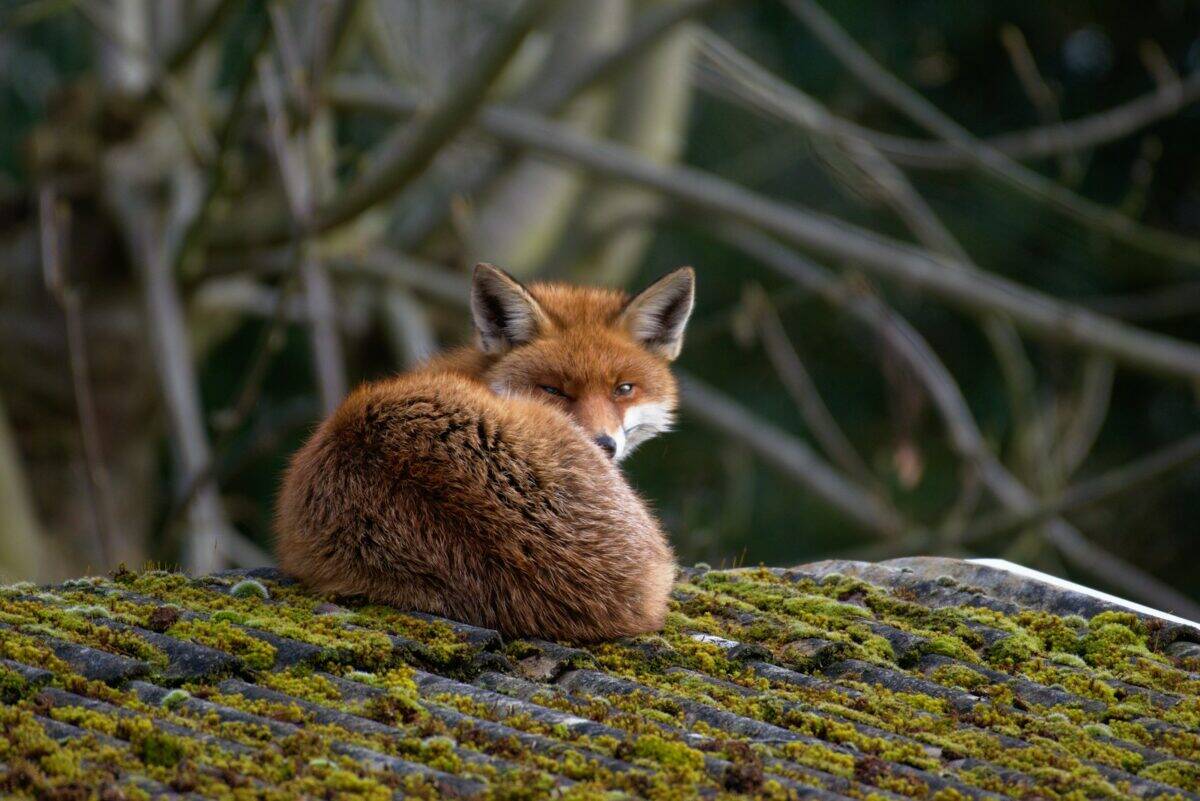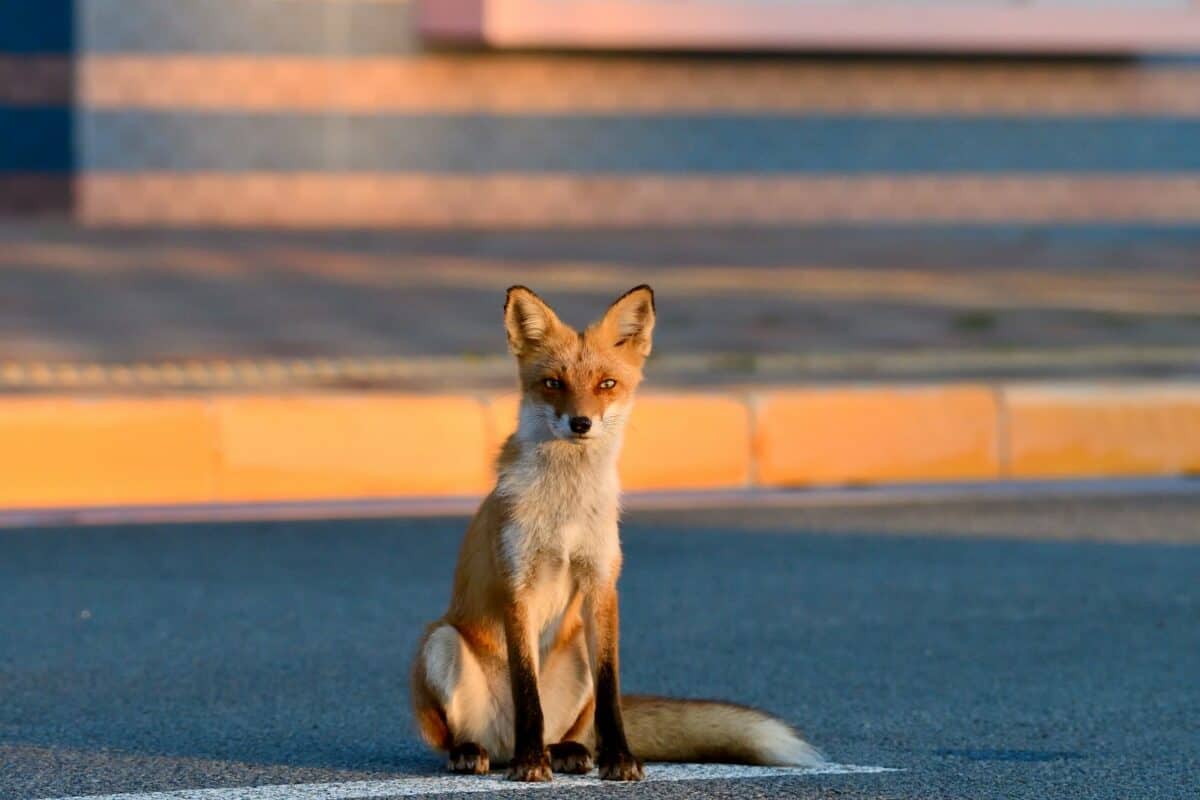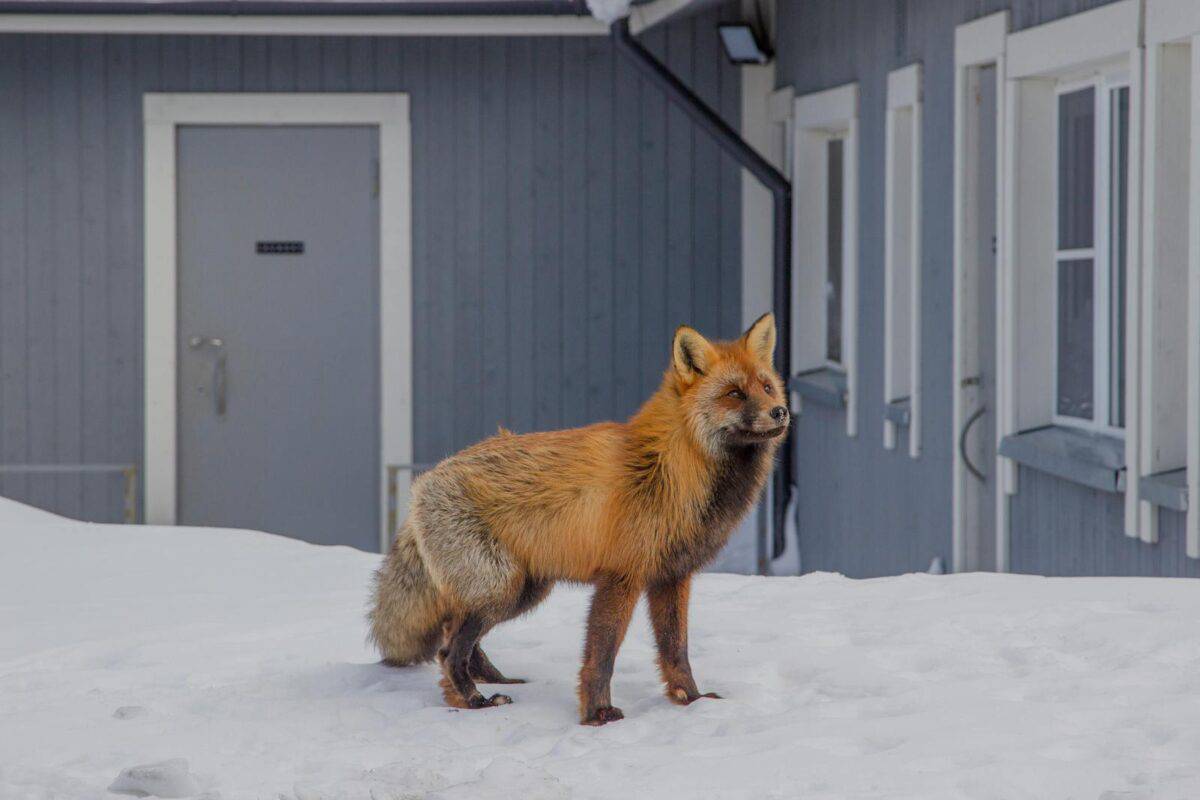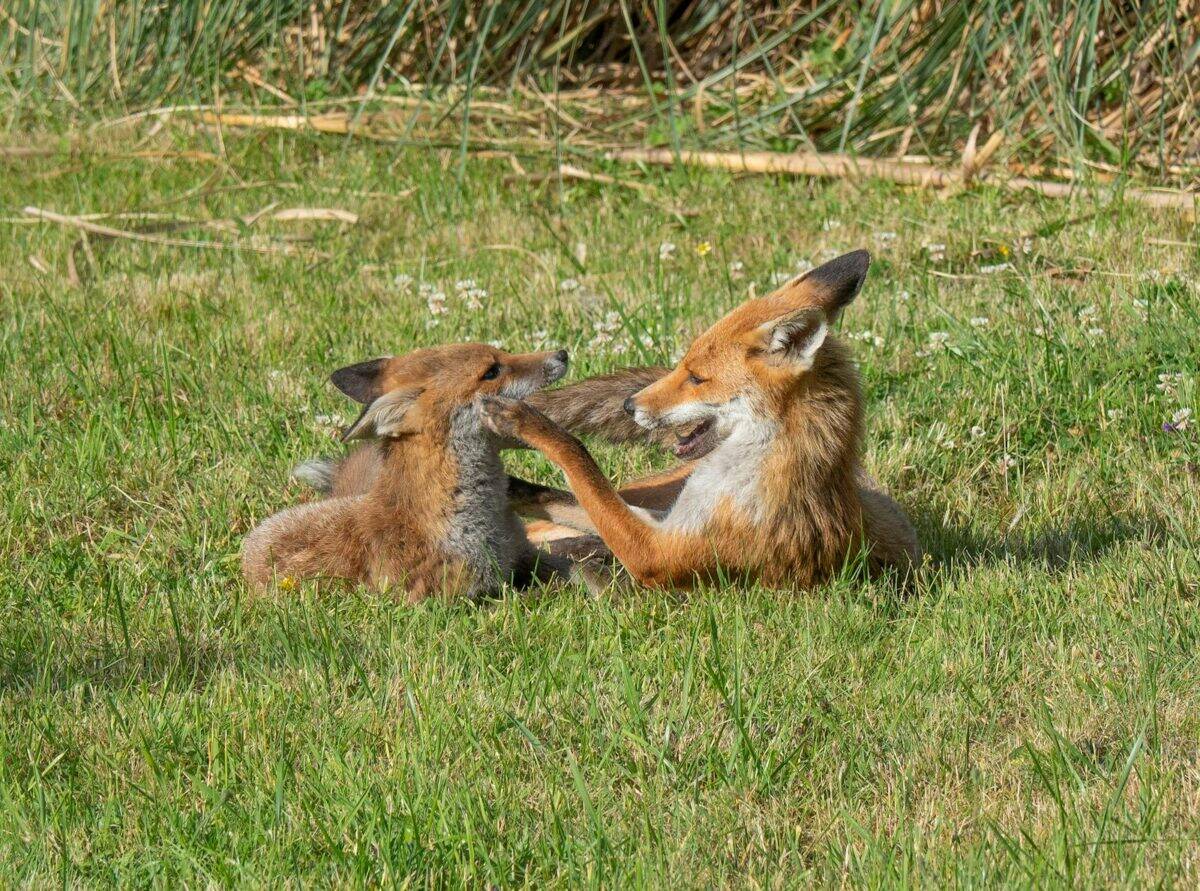Red foxes have become a common sight in urban landscapes across America, padding silently through neighborhoods after dark, their bright eyes reflecting streetlights as they navigate our concrete jungles. Once exclusively wild creatures, these adaptable canids have found new opportunities in our cities, demonstrating remarkable resilience and intelligence. Their increasing presence raises questions about how wildlife adapts to human-dominated landscapes and what this means for both species’ future coexistence. From New York to Los Angeles, urban fox populations are growing, creating unique challenges and opportunities for conservation and human-wildlife interaction.
The Rise of Urban Fox Populations

Urban fox populations have been steadily increasing across American cities over the past few decades. While comprehensive population data remains difficult to collect, research indicates significant growth in metropolitan areas like Washington D.C., Chicago, Los Angeles, and Denver. Scientists estimate that urban fox densities can reach up to 12 foxes per square kilometer in some city environments, compared to 2-4 foxes in equivalent rural habitats. This dramatic population shift represents one of the most successful examples of wildlife adaptation to human environments in recent history.
Several factors contribute to this urban migration. Habitat loss in rural areas has pushed foxes toward cities, while predator control programs targeting coyotes—natural competitors of foxes—have inadvertently created ecological niches for foxes to fill. Urban areas also offer abundant food resources, milder microclimate conditions, and fewer natural predators. The result is a growing presence of these intelligent, adaptable mammals in America’s urban landscape, where they are carving out a new ecological niche alongside human residents.
Distinguishing Urban Fox Species

While several fox species exist in North America, the red fox (Vulpes vulpes) represents the vast majority of urban fox sightings. With their distinctive rusty-red fur, black legs, white-tipped tail, and pointed ears, these medium-sized canids are easily recognizable even to casual observers. Adult red foxes typically weigh between 8-15 pounds and measure about 3 feet in length including their bushy tail. In some regions, particularly in the southwestern United States, the gray fox (Urocyon cinereoargenteus) may also adapt to urban environments, though they generally prefer areas with more woodland cover.
Urban red foxes often display subtle differences from their rural counterparts. City-dwelling foxes tend to be slightly smaller, likely due to different dietary patterns, and sometimes exhibit variations in fur coloration ranging from the classic red to more melanistic (darker) variations. These adaptations may represent evolutionary responses to urban living, though researchers continue to study whether these changes are genetic adaptations or simply phenotypic responses to different environmental conditions. Regardless, the fox’s ability to adapt physically to urban environments demonstrates their remarkable evolutionary flexibility.
Remarkable Adaptability and Intelligence

Urban foxes have demonstrated extraordinary adaptability in adjusting their behaviors to city life. Unlike many wildlife species that fail to thrive in human-dominated landscapes, foxes have modified nearly every aspect of their behavior to capitalize on urban resources. Research indicates that urban foxes have altered their activity patterns, becoming more nocturnal to avoid human interaction. They’ve developed specialized navigation skills that allow them to utilize human infrastructure, including using railroad tracks, greenways, and even sewer systems as travel corridors between fragmented habitat patches.
Their cognitive abilities play a crucial role in their urban success. Foxes possess problem-solving skills on par with domestic dogs, allowing them to overcome novel challenges presented by urban environments. They quickly learn to open unsecured garbage containers, access compost bins, and identify reliable food sources. Studies have documented foxes learning traffic patterns and safely crossing busy streets, behavior requiring substantial spatial awareness and adaptive learning. This intelligence, combined with their natural wariness of humans, creates the perfect combination for thriving in environments that overwhelm many other wildlife species.
Diet and Foraging in the Concrete Jungle

The urban fox’s diet represents one of the most significant adaptations to city living. While rural foxes primarily consume small mammals, birds, and seasonal fruits, urban foxes have become opportunistic omnivores with remarkably diverse diets. Research analyzing urban fox scat samples reveals that human food waste can constitute up to 50% of their diet in some city populations. Fast food scraps, discarded pet food, and compost materials provide high-calorie, readily available nutrition. Despite this dietary shift, urban foxes still maintain their hunting skills, controlling rodent populations by consuming rats, mice, and voles that thrive in urban environments.
This dietary flexibility provides urban foxes with significant advantages. Unlike dietary specialists that struggle when preferred food sources disappear, foxes quickly switch between food sources as availability changes. They effectively capitalize on seasonal variations, consuming fallen fruits from ornamental trees, bird eggs during spring, and increasing scavenging during summer months when outdoor human activities produce more food waste. Some urban residents report foxes learning household routines, strategically visiting properties when pet food is typically left out or garbage is placed for collection, demonstrating their remarkable ability to synchronize their foraging with human patterns.
Breeding and Denning Behaviors in Urban Settings

Urban environments have transformed fox reproduction and denning patterns in fascinating ways. While breeding seasons remain consistent with their rural counterparts (mating in winter with kits born in spring), urban foxes have adapted their denning strategies to utilize human structures. Researchers have documented urban fox dens beneath porches, in abandoned buildings, under garden sheds, and within neglected landscaping features. These locations provide protection from weather extremes, concealment from humans, and often improved security from potential predators compared to natural den sites.
Family dynamics also shift in urban settings. Urban fox families tend to maintain smaller territories (sometimes as little as a quarter-mile radius compared to several miles in rural areas) but defend them more vigorously. Urban vixens typically produce larger litters, averaging 4-5 kits compared to 3-4 in rural areas, likely due to increased food availability. Kit survival rates in urban environments can exceed those in rural areas by 10-15%, primarily due to reduced predation and more consistent food resources. These demographic changes illustrate how city living fundamentally alters fox life history strategies, creating urban-adapted populations with distinct characteristics from their rural ancestors.
Human-Fox Interactions and Conflicts

As fox populations integrate into urban landscapes, human-fox interactions inevitably increase, creating both positive and negative outcomes. Many city residents report positive associations with local foxes, appreciating their role in controlling rodent populations and enjoying wildlife observation opportunities. Urban wildlife watching has become increasingly popular, with fox sightings generating enthusiasm and community interest in local ecosystems. Some neighborhoods have even developed unofficial “fox watches,” where residents share sighting information and track the activities of local fox families.
However, conflicts also arise. Foxes may dig in gardens, damage lawns while hunting for grubs and insects, or occasionally prey on unsecured small pets like rabbits or chickens. Disease transmission concerns persist, particularly regarding rabies, though actual transmission to humans remains exceedingly rare. Urban foxes can become habituated to humans who intentionally feed them, potentially leading to bold behavior that increases conflict. Wildlife management professionals consistently advise against direct feeding, emphasizing that maintaining appropriate wariness benefits both species. The key to successful coexistence lies in understanding fox behavior and implementing simple preventative measures before conflicts escalate.
Urban Challenges Facing Fox Populations

Despite their successful adaptation, urban foxes face numerous challenges unique to city environments. Vehicle collisions represent the leading cause of mortality, with an estimated 40% of urban fox deaths attributed to road accidents. Fragmented habitats force foxes to cross roads frequently, increasing collision risk, particularly for inexperienced juveniles dispersing to establish new territories. Secondary rodenticide poisoning presents another significant threat when foxes consume rodents that have ingested poison, leading to bioaccumulation of toxins with potentially fatal consequences.
Diseases spread more rapidly in dense urban fox populations. Sarcoptic mange, a highly contagious skin condition caused by parasitic mites, can devastate local fox populations when it takes hold in urban settings where foxes have increased contact rates. Canine distemper and parvovirus can also spread from domestic dogs to fox populations. Human intolerance occasionally leads to deliberate poisoning or trapping, though such activities are typically illegal in most jurisdictions. Despite these challenges, urban fox populations generally sustain themselves through high reproductive rates and remarkable adaptability, demonstrating resilience in the face of these urban-specific threats.
Regional Variations in Urban Fox Behavior

Fascinating regional differences exist in how foxes have adapted to various American cities. In northeastern cities like Boston and New York, urban foxes display highly nocturnal patterns, rarely seen during daylight hours due to high human density and limited green space. These populations have become expert navigators of fragmented green spaces, utilizing cemetery grounds, golf courses, and waterway corridors as core habitat. By contrast, foxes in western cities like Denver and Portland show greater diurnal activity, particularly in neighborhoods adjacent to natural areas, suggesting regional variations in habituation levels.
Dietary patterns also show regional variations. In coastal cities, urban foxes may incorporate significant amounts of marine resources, scavenging fish remains from harbors or hunting shore crabs. Southern city foxes consume more reptiles and amphibians year-round due to climate conditions, while northern urban populations shift to almost exclusively mammalian prey during winter months. These regional adaptations demonstrate the fox’s remarkable ability to adjust to specific urban contexts, essentially creating distinct urban ecotypes across different American cities that reflect local conditions, resources, and human activity patterns.
Research and Monitoring Techniques

Studying urban foxes presents unique challenges that have driven innovation in wildlife research techniques. Traditional tracking methods like radio telemetry have been supplemented with modern approaches including GPS collars that provide detailed movement data, camera traps strategically placed throughout urban environments, and even citizen science initiatives that engage community members in reporting fox sightings. These combined approaches create comprehensive pictures of urban fox behavior that would be impossible through single-method research.
Genetic sampling has revealed surprising insights about urban fox populations. DNA analysis from scat and hair samples indicates that many urban fox populations originated from multiple colonization events rather than single founding populations, creating genetic diversity that contributes to their adaptability. Some researchers have employed stable isotope analysis of fox tissues to determine precise dietary composition, revealing the proportion of natural vs. human-sourced foods in their diets. These sophisticated research approaches have transformed our understanding of urban fox ecology and provided wildlife managers with data-driven insights for developing effective management strategies that promote coexistence.
Management Approaches and Coexistence Strategies

Wildlife management agencies have developed nuanced approaches to urban fox management that prioritize coexistence over removal. Research consistently demonstrates that trapping and removing urban foxes creates vacant territories quickly filled by new individuals, making culling ineffective for population control. Instead, wildlife professionals focus on education and conflict prevention. Community programs teach residents how to fox-proof gardens, secure trash containers, and modify landscaping to reduce denning opportunities in problematic locations. Some cities have developed response teams specifically trained to address fox-related concerns and mediate human-wildlife conflicts.
Successful coexistence requires understanding fox behavior and implementing simple preventative measures. Securing potential food sources, blocking access to potential den sites under structures, and using motion-activated deterrents in sensitive areas effectively reduce conflicts. Some communities have implemented “fox-aware” certification programs for neighborhoods that adopt wildlife-friendly practices. When properly implemented, these strategies allow humans and foxes to share urban environments with minimal conflict, creating more resilient and ecologically diverse cities that maintain connections to natural processes even within highly developed landscapes.
The Ecological Benefits of Urban Foxes

Urban foxes provide significant ecological services that often go unrecognized. As mesopredators, they help control populations of rodents that can damage infrastructure and spread disease. A single fox family can consume thousands of rats and mice annually, providing natural pest management services. Research in Chicago demonstrated that neighborhoods with established fox territories experienced significantly lower rat populations compared to similar areas without foxes. Their scavenging behavior also contributes to urban ecosystem function by removing carrion and food waste that might otherwise attract less desirable wildlife or create public health concerns.
Beyond direct ecological benefits, foxes serve as charismatic ambassadors that connect urban residents with wildlife. Studies show that positive encounters with urban wildlife like foxes increase public interest in conservation and environmental stewardship. Children who observe neighborhood foxes often develop greater interest in natural sciences and wildlife protection. As one of the few medium-sized predators that can thrive in urban environments, foxes represent living examples of successful adaptation and resilience in the face of environmental change, offering valuable lessons about how humans and wildlife can coexist in increasingly urbanized landscapes.
The Future of Urban Foxes in America

The trajectory of urban fox populations offers insights into broader questions about wildlife adaptation in the Anthropocene. As cities continue to expand and climate change alters habitat conditions, foxes represent a success story in wildlife adaptation that may foreshadow future ecological arrangements. Their remarkable behavioral plasticity suggests they will likely continue thriving alongside humans, potentially evolving specific adaptations to urban living that could eventually lead to distinct urban ecotypes or even subspecies. Ongoing research aims to understand whether genetic changes are already occurring in response to urban selection pressures.
Looking forward, coexistence with urban foxes will require thoughtful policy development and continued community engagement. Cities that proactively develop wildlife management plans incorporating the latest research on urban fox ecology typically experience fewer conflicts and greater public appreciation for these adaptable neighbors. By understanding and accommodating the needs of urban wildlife while addressing legitimate human concerns, American cities can become environments where ecological processes continue despite urbanization. The urban fox stands as a testament to nature’s resilience and adaptability, reminding us that with proper management and understanding, wildlife can persist and even thrive alongside humanity in our most developed landscapes.
Conclusion

The remarkable success of urban foxes in American cities represents one of the most compelling wildlife adaptation stories of our time. Their ability to navigate human-dominated landscapes while maintaining their essential nature demonstrates the potential for wildlife to adapt to our changing world. As we’ve explored throughout this article, urban foxes have modified nearly every aspect of their behavior—from diet and denning to activity patterns and social structures—to capitalize on the opportunities cities present while avoiding the associated risks. Their intelligence and behavioral flexibility have transformed what might seem like hostile concrete jungles into viable habitat.
The story of urban foxes challenges us to reconsider our relationship with wildlife in an urbanizing world. Rather than viewing cities as ecological dead zones, we can recognize them as novel ecosystems where adaptation and coexistence are possible. Through understanding, education, and thoughtful management, humans and foxes can share urban spaces to mutual benefit. The continued success of urban fox populations will depend on our willingness to accommodate their presence and address conflicts through evidence-based approaches rather than fear-based reactions.
As we move forward in an increasingly urbanized future, the urban fox offers valuable lessons about resilience, adaptation, and coexistence. Their presence enriches our urban experiences, connecting city dwellers to natural processes and wildlife observation opportunities that might otherwise be absent from metropolitan life. By embracing these adaptable neighbors and the ecological services they provide, we create cities that are not just more hospitable to wildlife but more livable for humans as well—diverse, resilient systems where the boundaries between natural and built environments become productively blurred.
- This Bird Sets Forests on Fire - August 17, 2025
- Orcas Have Regional Accents - August 17, 2025
- The Largest Group Migration in the Animal World - August 17, 2025

